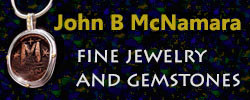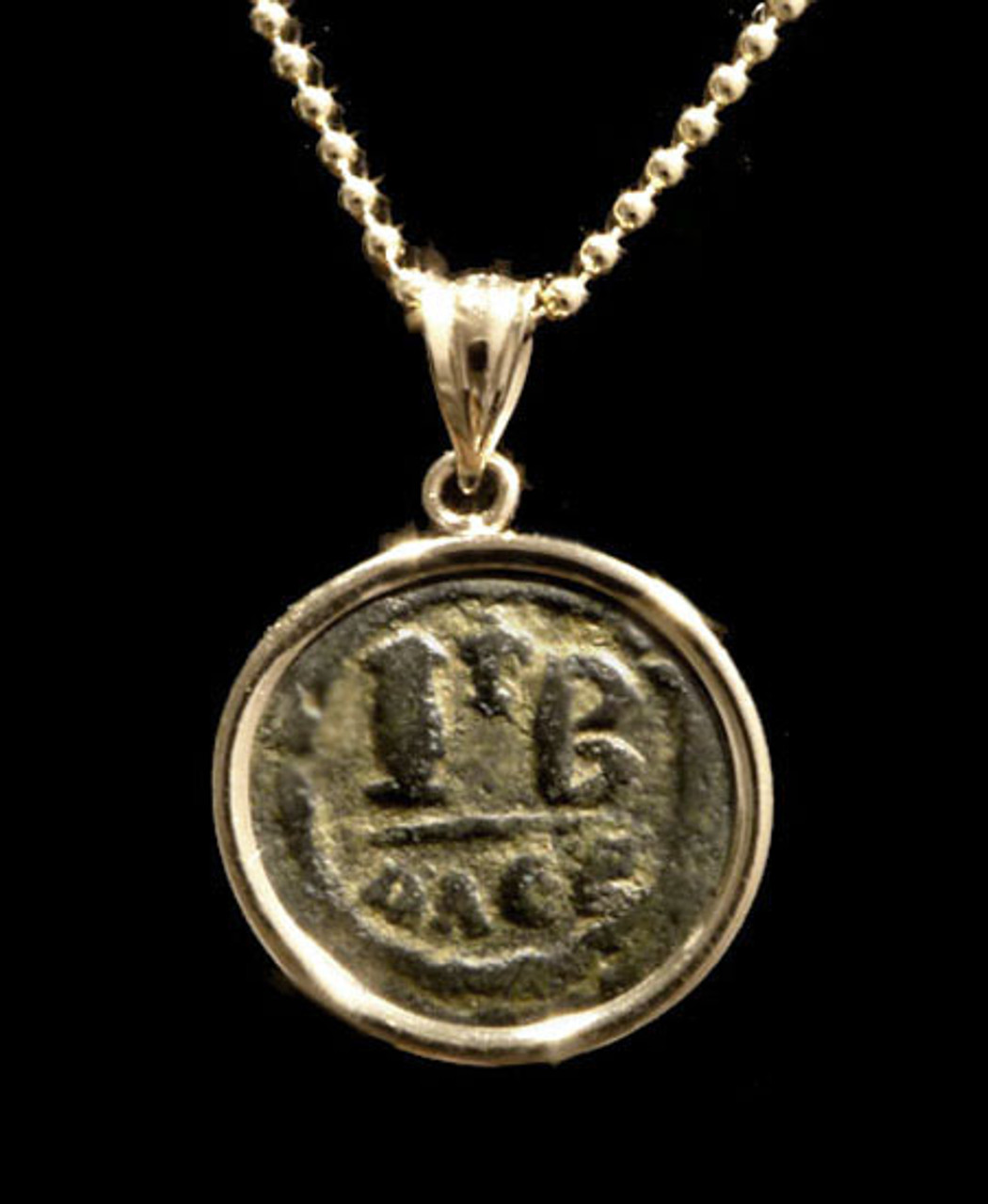Product Description
This beautiful small ancient bronze Roman Byzantine coin is called a DECANUMMIUM. It is set in a simple, high-polished 14KT yellow gold pendant setting. The mint green and chocolate brown patina highlights the detail of the coin and perfectly compliments the warm yellow of the surrounding gold. This coin is mounted with the reverse side showing a prominent letter 'I' which means 10 or ten nummi, the denomination of the coin. A second letter next to the "I" is the letter "B" which was an official letter designating a subdivision where it was minted. The letters below also indicate the mint. A Christian cross is seen between the "I" and "B".
Perfect for someone who has the letters "I" and "B" in their initials, or to commemorate a tenth anniversary, the denomination of the coin. The handsome appearance of this piece is easily worn by either a man or woman and would most certainly, make for a unique, unforgettable gift!
ADD THE DISPLAYED MEDIUM BEAD GOLD CHAIN
HISTORY
As a result of the Byzantine coinage reform carried out at the end of the fifth century AD, a whole new range of denominations was brought into being each clearly marked with it’s value as a multiple of the basic ‘nummus’. The Christian religion that permeated the Byzantine culture influenced decisions to use Greek numerals for the new coins as Greek was the language of the New Testament. The largest denomination, the FOLLES, bore the mark of value “M” (40 nummi), the HALF FOLLES “K” (20 nummi), the DECANUMMIUM “I” (10 nummi), and the PENTANUMMIUM “E” (5 nummi), introduced at a later period. Over time, imagery used on the Byzantine coinage became increasingly religious. A portrait of Christ first appears on coinage of Justinian II (685-695 AD). Religious images were later banned in 815 AD during the Iconoclastic Period but restored in 843 AD under the empress Theodora.
 US Dollars
US Dollars
 AUD
AUD
 CAD
CAD
 POUNDS STERLING
POUNDS STERLING






